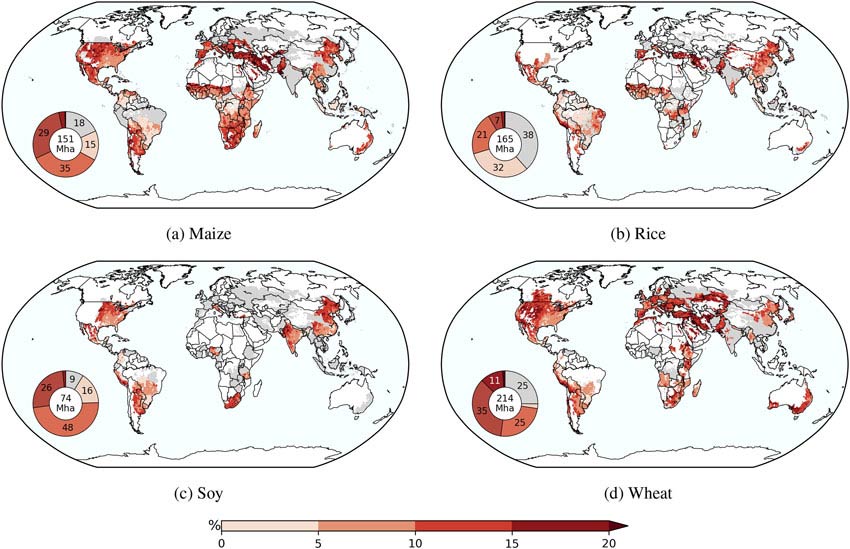News
Global-Warming-Induced Droughts can Trigger 166 Billion Dollar Damage for Grains Worldwide: NARO Estimates for a Period of 27 Years Updated in September 2019
Through a period of 27 years from 1983 to 2009, yields from world's major grains like rice and wheat, decreased due to droughts. Damages totaled approximately 166 billion US dollars. The team at National Agriculture and Food Research Organization (NARO) drew up such an estimate. With progressed global warming, droughts are expected to increase. The research groups said the estimates and results are useful for foreseeing global damage from droughts and for providing international support.
For wheat, rice, maize and soybeans, the NARO team analyzed rainfall and grain yield around the world. For the first time in the world, the group investigated the drought’s influence per every 50 square kilometers on the world map. The group analyzed data worth 27 years, from 1983 to 2009.
As a result, there were damages from droughts in approximately 450 million hectares of agricultural soil which accounts for 3/4 of all cultivated lands for the four grains. The number of grain-growing regions damaged by more than one drought amounted to 161 million hectares for wheat. This accounts for 75 percent of the world's harvest areas. For maize, 124 million hectares or 82% of harvest areas were damaged. For rice, 102 million hectares or 62% of harvest areas were damaged. Lastly for soybeans, 67 million hectares or 91% of harvest areas suffered damage. On a 27-year-average, the rate of decrease in grain yield per drought was 8% or 0.29 tons/hectare for wheat, 7% or 0.24 tons/hectare for maize, 3% or 0.13 tons/hectare for rice, and 7% or 0.15 tons/hectare for soybeans. A 1-hectare-land consists of a square-shaped land measuring 100 meters on each side.
The total amount of damage for 27 years which reached 166 billion dollars, was estimated from surveyed crop damages, and from each country's producer price of 2005. The decline in grain yield due to drought was particularly high in developing countries located in dry areas.
The fifth assessment report of the Intergovernmental Panel on Climate Change (IPCC) points out that drought and food shortage shed heavy impact on global warming. The ICPP report is drafted by researchers and government officials across 200 countries around the world.
The research team says that they are now able to estimate the damage in crop yield at any given point on the planet as long as they have access to data on rainfall; average figure for annual precipitation and monthly precipitation for 3 months before harvest. From past precipitation data and forecast of future precipitation, the team can evaluate potential economic loss and how much grain harvest will be lost.
https://journals.ametsoc.org/jamc/article/58/6/1233/343426/Global-Patterns-of-Crop-Production-Losses








